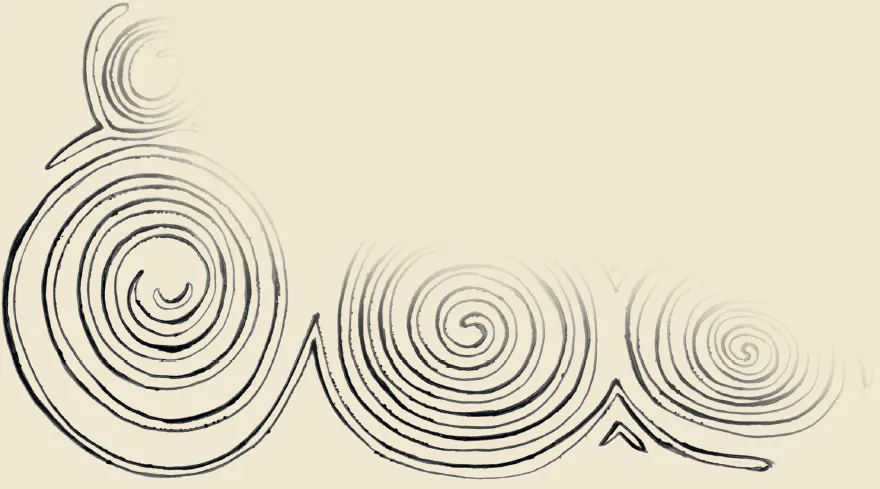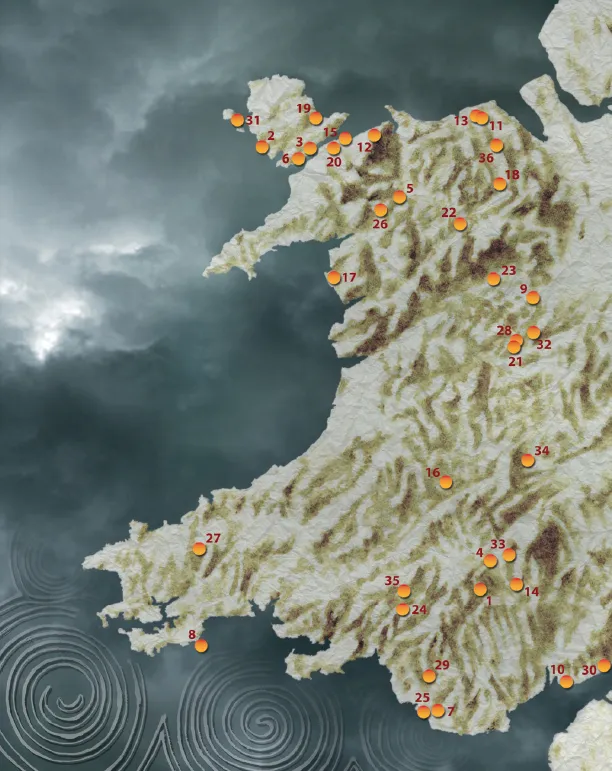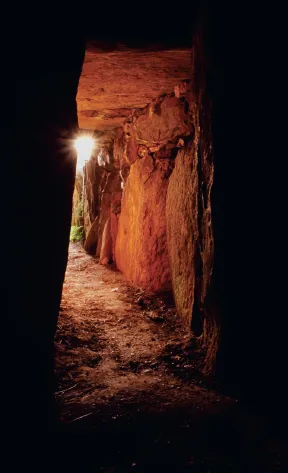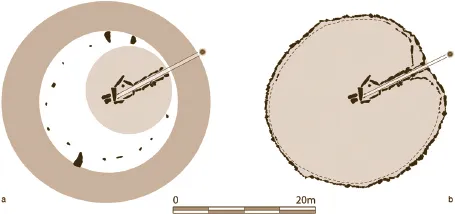![]()
Part 1
3000 – 2200 BC
![]()
The years around 3000 BC
The last of the tomb builders
At some time in the decades around 3000 BC a community marked out a plot of land on Anglesey as the site of their ancestral tomb. It is not known why they picked the location they did – possibly it was because it was close to an enclosure that had been abandoned a few centuries before, less likely they noticed the postholes of a building which had occupied this place some three thousand years earlier.
The planning of the tomb was carefully done. A post was set upright, and then the builders waited for a clear midsummer morning when they could mark out a line to fix the point where the sun rose on the horizon. An arc of standing stones was then positioned around the post to highlight both this alignment and the orientation which the tomb chamber and passage walls would occupy. Fragments of cremated bone were placed beneath some of these standing stones and in pits within the area they defined.
Great slabs of stone were then dragged into position, probably from beside a rock outcrop about 150m away, and the chamber took shape. Then the passage was built, carefully following the lines that had been marked out previously. While work progressed a large slab carved with swirling patterns was dragged to its position behind the chamber and the whole monument was encased in a mound, the earth for which was dug from a ditch which encircled the whole. But the building was not yet finished. Another year passed and the alignment of the passage was checked to ensure that the rising sun would fall on the rear wall of the tomb's chamber. The alignment was a success and a window of light illuminated the chamber as anticipated, but still more could be done to highlight the drama of the effect. Further additions were made to the passage, narrowing and extending it, increasing the precision with which the tomb caught the rising midsummer sun – warming the cremated bones of the community's dead forever.
This tomb which is now known as Bryn Celli Ddu, ‘the Mound of the Dark Grove’, was excavated in the 1920s by one of Wales's great archaeologists, W J Hemp. So meticulous are his records of his work that it allowed the author to return to his archive almost eighty years later, to study his site notebooks and to radiocarbon date some of the charcoal and human bones which he had carefully preserved. This, in turn, allowed the history of the site to be understood, but the most important development in the story of Wales's last tomb builders has come as a result of excavation at sites in other countries. These have served to identify the builders of Bryn Celli Ddu as adherents of a specific millennia-old burial tradition found along the shores of Atlantic Europe from Portugal to Brittany, and from Ireland to Orkney. The people who adopted this tradition, which probably has its origin in the southern part of this 2,500km long distribution, were united in the construction of round mounds, pierced by passages leading to concealed chambers, hence the name ‘passage tombs’.
The passage tomb tradition reached its apogee in the massive tombs of Ireland, some of which were probably built a century or two before Bryn Celli Ddu and which are profusely decorated with swirling and jagged carvings. The carvings at Bryn Celli Ddu are confined to just two stones, but in Wales the finest surviving examples of this art are to be found at Barclodiad y Gawres, ‘the Apronful of the Giantess’, a cliff-top tomb on the west coast of Anglesey. Excavation began here in 1952, led by Terence Powell of Liverpool University and Glyn Daniel from Cambridge; both were key figures in the study of megalithic tombs and were well-placed to interpret their findings. Their work revealed a passage leading to a central chamber from which opened three side chambers. The capstones of these structures had already been removed, and the contents of the chambers pillaged, but the designs on the wall survived. Powell and Daniel recognised carvings on three stones at the entrance to the main chamber and on the rear wall of two of the side chambers, and since their work George Nash has led a project which has identified one more example. The most dramatic of these carvings takes the form of a stylised figure, positioned at the opening of passage to chamber. The shape of the stone suggests the figure's outline, with the torso picked out with zigzagged lines and chevron...





